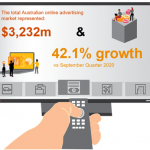Despite a shrinking advertising expenditure (adex), outdoor advertising or
out-of-home advertising (OOH) has managed to buck the trend and has been experiencing consistent growth globally, driven largely by the rapid rise in digital out-of-home advertising (DOOH).
The Malaysia 2019 OOH Adex Report by AIMs Research shows that while the adex for outdoor advertising remains consistent at 8% of the total industry adex, the market share of digital billboards increased from 2% in 2018 to 3% in 2019.
Malaysia’s high traffic volume has made OOH a logical choice among many advertisers, especially as it embraces technology to innovate, remain relevant and attract new advertisers.
Key findings
In 2019, the OOH and DOOH adex was RM1.4 billion compared to RM1.3 billion in 2018.There is a steady growth in terms of OOH adex.
More sites have converted to digital in the Klang Valley. Real estate is the biggest spender for OOH in 2019, followed by retail, service, communication and automotive. The other industries in the top 10 are beverage – non-alcoholic, government, social and political organisation, finance, education and learning, and household and outdoor appliances.
AIMS business director Chow Wei Heng told MARKETING magazine that he expects momentum from 2019 to grow especially in the DOOH sector.
“We are seeing more non-OOH brands no going to DOOH especially in the retail, services and education fields. We are seeing digital companies like Grab, Food Panda, Socar advertising in DOOH combining the high impact of DOOH with mobile and desktop.”
Retail recorded the biggest growth (20%) in 2019 compared to 2018, followed by the service industry (19%) and beverage – non-alcoholic (19%).
In addition, there was a drop in government, social and political organisation spending as there was no major political events happening in 2019 compared to the year before when the general election was held.
In terms of brands, Samsung leads the pack for OOH advertising, followed by KFC, Coway, TM, and Sime Darby. The rest in the top 10 are Celcom, Gamuda Land, Milo, U Mobile and Astro.
The real estate industry is the biggest advertiser although its adspend decreased by 5% in 2019 compared to the year before. It is followed by the communication and retail industries.
Coffee and health food drinks contributed to the 14% adex growth in the non-alcoholic beverage industry – the industry that had the biggest adex growth in 2019. Retail Industry recorded an increase of 3% – mainly contributed by fast-food chains like KFC and McDonald’s.
Most of the brands increased their OOH adspend year-on-year (YOY). Coway has recorded a 61% increment YOY and Huawei has increased by 33%. Only a few brands have recorded a drop in their OOH adex and these are Samsung, Apple and Honda.
There are more billboards than any other OOH media formats in Malaysia, taking up 64% of panel count in 2019. In terms of value, however, billboard shrinks to 36% while unipoles make up almost the equivalent in value, with almost eight times less panels.
Main market centres are still the focus area for advertisers for their campaigns. In the Klang Valley, total panels increased by 6% to 803 in 2019 compared to 761 in 2018.
The number of sites also increased from 152 in 2018 to 177 in 2019. Digital screen spending increased by 42% to RM338,161 million in 2019 compared
to RM238,020 million in 2018.
In 2019, the top 10 industries have increased their adspend. The service industry leads in terms of adspend volume with an increase of 76% from 2018. This is followed by retail; communication; finance; entertainment; automotive; media; government, social and political organisations; apparel and accessories; and education and learning.
The biggest percentage increase for adspend is by the education industry which recorded an increase of 236% in 2019 compared with 2018 – mainly contributed by private colleges such as Brickfields Asia College, Reliance College, Veritas University College, and Taylor’s University.
As for the top 10 brands, KFC leads in terms of rental volume followed by Celcom, Astro, Resorts World Genting, Foodpanda, TM, Digi, Sarawak Tourism Board, RHB Bank and Uniqlo.
Newcomer, Foodpanda (with a 79% share of voice or SOV), leads the F&B delivery industry.
Chow said that AIMS plans to work with key industry stakeholders to grow.
“OOH has traditionally been “under” reported medium despite is strong growth. Our mission is to work with the key industry stakeholders like 2As, MSA, 4As and OAAM (Outdoor Advertising Association of Malaysia) to develop industry-standard measurements and best practices for OOH. Currently, our core service is OOH Adex measurement that we have working on for the past 7 years. We just released the 2019 report. In 2020, we will be expanding the coverage to DOOH outside Klang Valley and also transit as well. We have also started pilot work on audience measurements and conducted a study on OOH effectiveness.”
He also said that reaching an increasingly mobile, social audience that has a small attention span is a big challenge for brands.
“OOH can help address this issue as one of the key “off-line” media.Audience measurement is a key issue that the industry would have to address that would enable brands to benchmark OOH against other media and worked out the campaign ROI.
Education is also another issue. The industry needs to develop a set of best practices covering issues like site & format selection, location targeting, creativeiy & interactivity,” he said.
“OOH is very location-targeted media format. And it is available in a wide range for formats covering various budget options. So it ideal with smaller companies that operate in a very define community to look for OOH opportunities that will work together with the digital and on-ground marketing. To get that DOOH mutiplying effect – bringing the high impact of the medium into play,” added Chow.
MARKETING Magazine is not responsible for the content of external sites.









